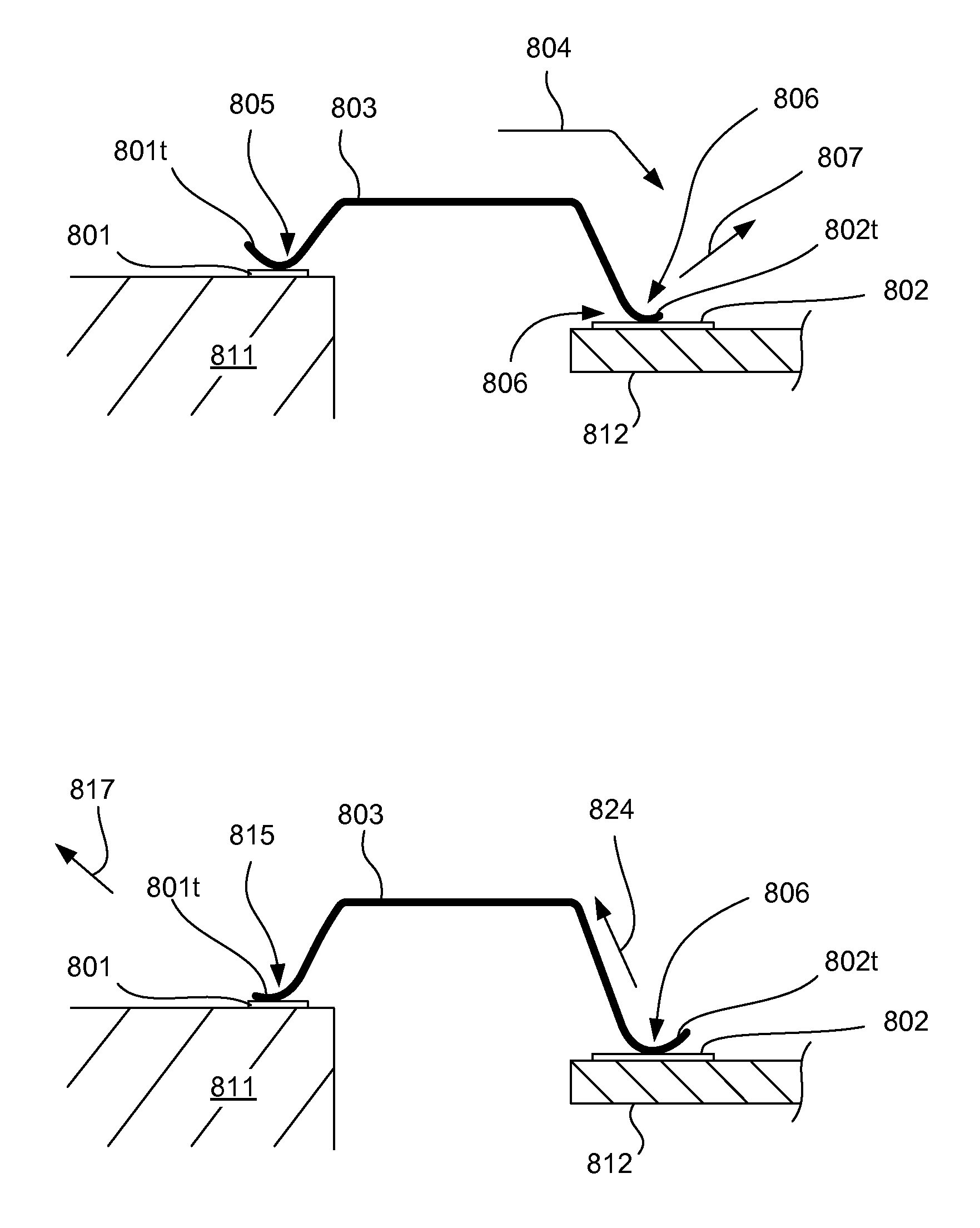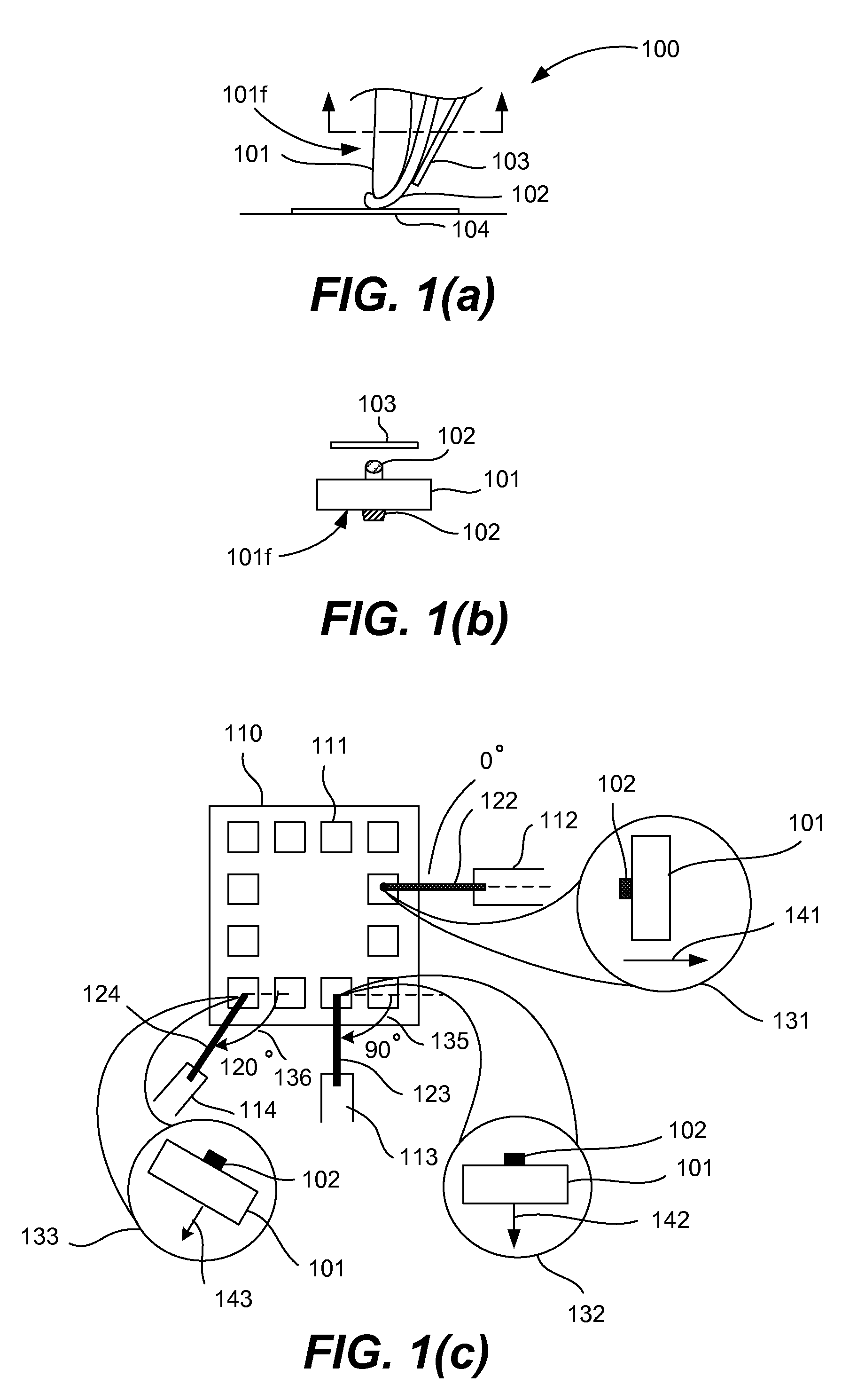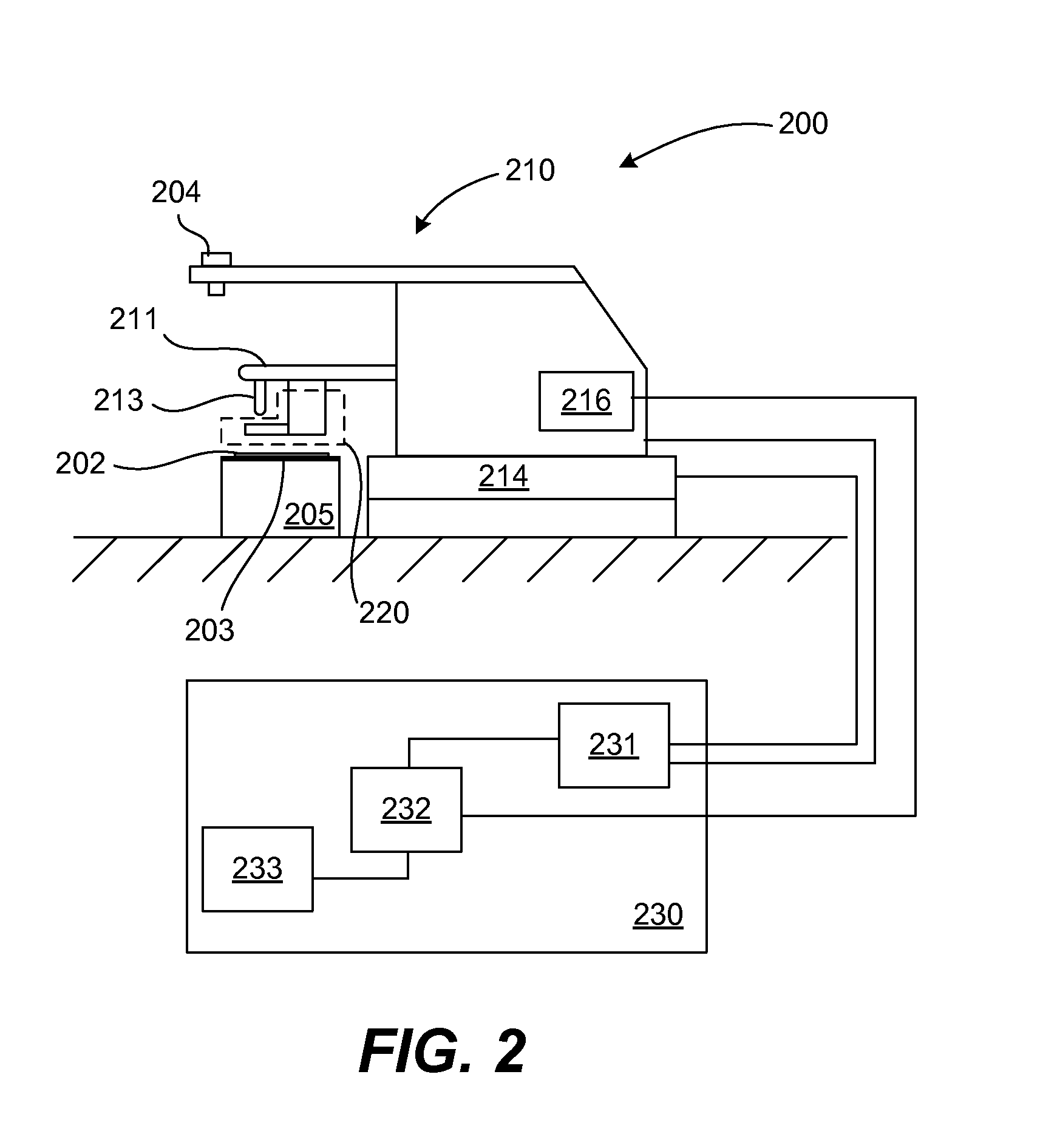Wirebonding method and device enabling high-speed reverse wedge bonding of wire bonds
a wire bonding and wire bonding technology, applied in the field of wire bonding and can solve the problems of high cost of gold, high cost of copper ball formation, and high temperature required for copper ball formation oxide formation, and achieve the effect of improving high-speed wedge bonding of wire bonding
- Summary
- Abstract
- Description
- Claims
- Application Information
AI Technical Summary
Benefits of technology
Problems solved by technology
Method used
Image
Examples
Embodiment Construction
[0032]Reference is made to particular embodiments of the invention. Examples of which are illustrated in the accompanying drawings. While the invention will be described in conjunction with particular embodiments, it will be understood that it is not intended to limit the invention to the described embodiments. To contrary, the disclosure is intended to extend to cover alternatives, modifications, and equivalents as may be included within the spirit and scope of the invention as defined by the appended claims.
[0033]Unless otherwise indicated, all numbers expressing quantities of ingredients, dimensions reaction conditions and so forth used in the specification and claims are to be understood as being modified in all instances by the term “about”.
[0034]In this application and the claims, the use of the singular includes the plural unless specifically stated otherwise. In addition, use of “or” means both “and” and also, “or”, unless stated otherwise. Moreover, the use of the term “inc...
PUM
| Property | Measurement | Unit |
|---|---|---|
| Length | aaaaa | aaaaa |
Abstract
Description
Claims
Application Information
 Login to View More
Login to View More - R&D
- Intellectual Property
- Life Sciences
- Materials
- Tech Scout
- Unparalleled Data Quality
- Higher Quality Content
- 60% Fewer Hallucinations
Browse by: Latest US Patents, China's latest patents, Technical Efficacy Thesaurus, Application Domain, Technology Topic, Popular Technical Reports.
© 2025 PatSnap. All rights reserved.Legal|Privacy policy|Modern Slavery Act Transparency Statement|Sitemap|About US| Contact US: help@patsnap.com



